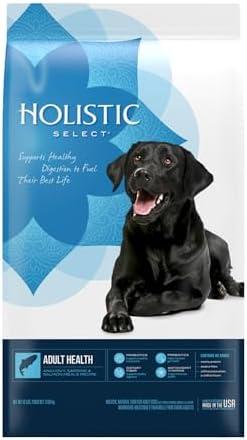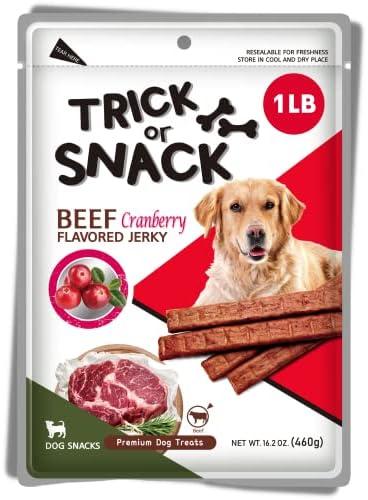Once upon a time in a cozy little home, a curious cat named Whiskers and a playful dog named Buster shared their days in harmony. One afternoon, Buster sniffed at Whiskers’ bowl, intrigued by the scent of her fishy feast. “Can I mix my kibble with your cat food?” he asked, his tail wagging. Whiskers pondered, “Well, it might not be the best idea. Our diets are different!” They decided to keep their meals separate but shared a delightful snack of treats together. they learned that friendship was the best recipe of all.
Table of Contents
- Understanding the Nutritional Needs of Cats and Dogs
- The Risks of Mixing Cat Food with Dog Food
- Best Practices for Feeding Multi-Pet Households
- Alternatives to Mixing: Finding the Right Diet for Each Pet
- Q&A
Understanding the Nutritional Needs of Cats and Dogs
When considering the dietary needs of our furry companions, it’s essential to recognize that cats and dogs have distinct nutritional requirements. Cats are obligate carnivores, meaning their bodies are designed to thrive on a diet primarily composed of meat. They require specific nutrients, such as taurine, arachidonic acid, and certain vitamins, which are found abundantly in animal tissues. On the other hand, dogs are more omnivorous and can digest a wider variety of foods, including grains and vegetables, although they still benefit from a protein-rich diet.
Mixing cat food with dog food may seem like a convenient solution, but it can lead to nutritional imbalances. Cat food is typically higher in protein and fat, which can be excessive for dogs, especially those with certain health conditions. Conversely, dog food lacks the essential nutrients that cats need, potentially leading to deficiencies if fed exclusively. Therefore, understanding the specific dietary needs of each species is crucial for maintaining their health and well-being.
Moreover, the differences in texture and flavor can also affect your pets’ eating habits. Cats may find dog food less appealing due to its lower protein content and different formulation, while dogs might enjoy the richer taste of cat food. However, consistently feeding a dog cat food can lead to obesity and pancreatitis due to the higher fat content. It’s important to monitor your pets’ reactions and adjust their diets accordingly to ensure they receive the right balance of nutrients.
while it might be tempting to mix cat food with dog food for convenience, it’s vital to prioritize the unique dietary needs of each animal. Providing species-appropriate nutrition not only supports their health but also enhances their quality of life. If you’re ever in doubt about your pets’ diets, consulting with a veterinarian can provide tailored advice to ensure your furry friends are getting the best possible nutrition.
The Risks of Mixing Cat Food with Dog Food
Mixing cat food with dog food may seem like a convenient solution for pet owners, but it can pose several risks to your furry friends. First and foremost, the nutritional requirements of cats and dogs differ significantly. Cats are obligate carnivores, meaning they require certain nutrients, such as taurine, that are not present in sufficient quantities in dog food. On the other hand, dogs are omnivores and can thrive on a more varied diet. This fundamental difference can lead to nutritional imbalances if the two types of food are combined.
Another concern is the potential for digestive issues. Cats have a more sensitive digestive system compared to dogs, and introducing dog food into their diet can lead to gastrointestinal upset. Symptoms may include vomiting, diarrhea, or even constipation. For dogs, while they may handle the occasional cat food treat, a steady diet of cat food can lead to obesity and pancreatitis due to its higher fat content. Therefore, mixing these foods can create a recipe for discomfort and health complications.
Moreover, there is the risk of developing food preferences that can complicate feeding routines. If a cat becomes accustomed to the taste of dog food, it may refuse to eat its specially formulated cat food, leading to deficiencies in essential nutrients. Similarly, dogs may start to prefer the richer flavors of cat food, which can lead to overeating and weight gain. This behavioral shift can make it challenging for pet owners to maintain a balanced diet for their pets.
Lastly, there is the potential for allergic reactions or sensitivities to ingredients found in either type of food. Some pets may have allergies to specific proteins or fillers commonly found in dog food, which could trigger adverse reactions when mixed with cat food. It’s essential to monitor your pets closely for any signs of allergies or intolerances, as these can lead to more severe health issues if left unaddressed. while mixing cat food with dog food might seem harmless, the risks involved can outweigh the convenience.
Best Practices for Feeding Multi-Pet Households
Feeding multiple pets can be a delightful yet challenging experience. To ensure that each pet receives the appropriate nutrition, it’s essential to establish a structured feeding routine. Consider setting specific meal times for each pet, which helps to prevent any food stealing or competition during mealtime. This not only promotes a peaceful environment but also allows you to monitor each pet’s food intake more effectively.
When it comes to food selection, it’s crucial to choose high-quality, species-appropriate diets. Cats and dogs have different nutritional needs, so mixing their food can lead to imbalances. Instead of combining cat food with dog food, consider using separate feeding stations. This way, you can provide each pet with their specific diet while minimizing the risk of them consuming something that could be harmful or inadequate for their health.
Another effective strategy is to use **elevated feeding stations** or **food puzzles**. These can help keep the food out of reach for pets that might be tempted to steal from their housemates. Additionally, these tools can stimulate your pets mentally and physically, making mealtime more engaging. Always supervise feeding times, especially when introducing new feeding methods, to ensure that all pets are safe and comfortable.
Lastly, regular veterinary check-ups are vital for multi-pet households. Your veterinarian can provide tailored advice on the best diets for each pet based on their age, weight, and health status. Keeping an open line of communication with your vet will help you make informed decisions about your pets’ diets and ensure that they thrive in a harmonious multi-pet environment.
Alternatives to Mixing: Finding the Right Diet for Each Pet
When considering the dietary needs of your pets, it’s essential to recognize that cats and dogs have distinct nutritional requirements. Instead of mixing their foods, exploring tailored diets can ensure that each pet receives the right balance of nutrients. For instance, cats are obligate carnivores, meaning they thrive on a diet rich in animal proteins, while dogs are omnivores and can benefit from a more varied diet that includes both animal and plant-based ingredients.
To find the best diet for your feline friend, look for cat food that is high in protein and contains essential amino acids like taurine. Additionally, consider options that include:
- High-quality meat sources such as chicken, turkey, or fish
- Limited carbohydrates to prevent obesity and digestive issues
- Added vitamins and minerals to support overall health
For your canine companion, a balanced diet should incorporate a mix of proteins, grains, and vegetables. When selecting dog food, prioritize products that offer:
- Whole meats as the primary ingredient
- Healthy fats like omega-3 and omega-6 fatty acids
- Fiber-rich ingredients such as sweet potatoes or peas for digestive health
Consulting with a veterinarian can provide valuable insights into the specific dietary needs of your pets. They can recommend appropriate commercial diets or even help you formulate a homemade meal plan that caters to each pet’s unique requirements. By focusing on individual diets, you can promote optimal health and well-being for both your cat and dog, ensuring they thrive on their respective nutritional plans.
Q&A
-
Can I mix cat food with dog food?
While it’s technically possible to mix cat food with dog food, it’s not recommended. Cats and dogs have different nutritional needs, and cat food is formulated to meet the specific dietary requirements of felines, which can lead to imbalances in a dog’s diet.
-
What happens if my dog eats cat food?
If your dog occasionally eats cat food, it may not cause immediate harm. However, regular consumption can lead to obesity and nutritional deficiencies due to the high protein and fat content in cat food, which is not suitable for dogs.
-
Can mixing the two foods cause health issues?
Yes, mixing cat food with dog food can potentially lead to health issues over time. Dogs may develop pancreatitis or other digestive problems due to the excess fat and protein found in cat food.
-
What should I do if my pets prefer each other’s food?
If your pets prefer each other’s food, consider feeding them separately to ensure they receive the appropriate nutrition. You can also consult your veterinarian for advice on suitable diets for both cats and dogs.
while mixing cat food with dog food may seem convenient, it’s essential to prioritize your pet’s nutritional needs. Always consult your veterinarian to ensure a balanced diet for both your furry friends, keeping their health and happiness in mind.




